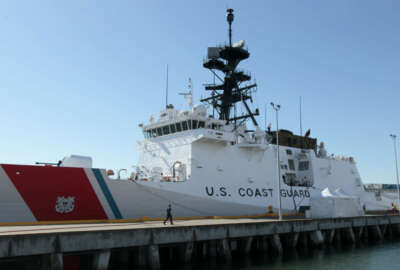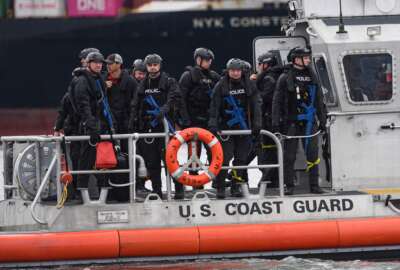Sponsored by Planet Federal
Naval Intelligence adopting cloud services to sort signal from noise
The National Maritime Intelligence-Integration Office coordinates maritime awareness intelligence from a plethora of stakeholders, both domestic and international,...
Oceans account for 71% of the planet’s surface, and the U.S. Navy and Coast Guard are tasked with securing it from bad actors ranging from nation-state competitors to drug smugglers, terrorists and pirates. Such an enormous mission area and broad mandate requires acute intelligence in the form of maritime domain awareness, gathered from a plethora of stakeholders, both domestic and international. That’s where the National Maritime Intelligence-Integration Office comes in, serving as the link between organizations that collect and analyze this data, and those that operationalize it.
“The volume and velocity of data these days is tremendous and we need to use tools in order to help us do that,” Todd Boone, senior strategy advisor for the National Maritime Intelligence-Integration Office, said on Federal Monthly Insights – Maritime Domain Awareness. “The naval intelligence enterprise as a whole is deploying cloud native tools and modernizing its databases in order to increase the speed of data processing. These tools help everyone in the maritime community understand how competitors rogue nations like Iran and North Korea, the non-government malign actors like terrorists and whatnot, all behave on the water. And they also help characterize how changes in climate and human-made disasters like oil spills also affect maritime safety and security.”
One such tool is called SeaVision, a web-based application hosted by the Transportation Department. It’s a maritime situational awareness tool that allows the Coast Guard Intelligence Coordination Center and the Office of Naval Intelligence to gather information on what Boone called “vessels of interest.” Python algorithms help human analysts sort through the data, and interactive visualization tools help create a fuller picture of the environment.
But Boone said the actual discoveries are usually still due to human interpretation of the data. The tools help provide analysts with all the necessary information, but it’s experts in the maritime domain that are actually able to differentiate between normal and abnormal processes, and respond appropriately.
“By analyzing their patterns and detecting anomalies in what normally happens in the maritime industry and identifying the abnormal behavior of these actors, analysts can then enable a whole range of actions to disrupt or deny the illicit activity, either by cueing U.S. assets, or by sharing that information with our partners and allies,” Boone said. “The broader maritime community applies expert knowledge to the use of several tools and techniques and newer algorithms that find the exact bad actor and passes that information to the decision makers for action.”
For example, SeaVision has an algorithmic model that detects illegal fishing, but the analyst makes the final determination on whether the model has correctly flagged instances. That’s commonly referred to as a “human-in-the-loop” dynamic. That’s one of the two methods of oversight naval intelligence is using in their pursuit of ethical artificial intelligence.
The other method is “human-over-the-loop,” Boone said. That’s where analysts oversee and regularly update the automated processes themselves, in order to ensure the accuracy of the output. For example, SeaVision has another tool that connects certain data in order to form different ship tracks. Those models have to be continuously updated as technology changes.
“The future of naval intelligence is not just about physical capabilities of the fleet. It is about the power of our data. The key to unlocking the next era of our maritime strategy lies in the algorithms and the analytics that get developed with this new technology,” Boone said. “It’s obvious that data science and machine learning will shape the future of maritime analysis. All of our partners are currently working to adopt modern data science and cloud native tools as part of the wider DoD [and intelligence community] investment in cloud services that we’ve been talking about.”
Copyright © 2025 Federal News Network. All rights reserved. This website is not intended for users located within the European Economic Area.
Daisy Thornton is Federal News Network’s digital managing editor. In addition to her editing responsibilities, she covers federal management, workforce and technology issues. She is also the commentary editor; email her your letters to the editor and pitches for contributed bylines.
Follow @dthorntonWFED






